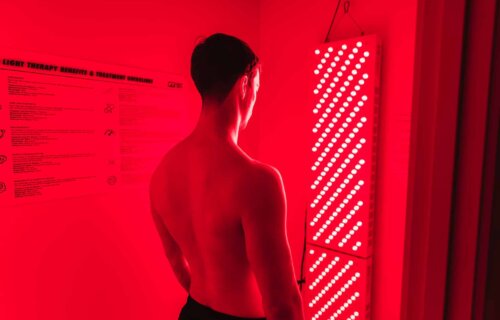LONDON — People with diabetes may soon have a new way of dealing with their blood sugar issues. Importantly, the solution doesn’t require injections or drugs — it uses red light.
Researchers in London discovered that applying 670 nanometers of red light to the skin increased energy production within mitochondria, the “powerhouses” of the cells. What does that have to do with lowering blood sugar levels? Study authors explain that mitochondria break down sugar to create chemical energy for cells to use.
Their study showed that the red-light stimulation increased mitochondrial function, leading to a 27.7-percent drop in blood glucose levels. Additionally, it lowered maximum glucose spiking by 7.5 percent.
“It is clear that light affects the way mitochondria function and this impacts our bodies at a cellular and physiological level. Our study has shown that we can use a single, 15-minute exposure to red light to reduce blood sugar levels after eating,” says Dr. Michael Powner, a senior lecturer in neurobiology at the School of Health & Psychological Sciences at City University London and co-author of the study, in a media release.
Previous research has shown that long-wavelength light between 650 and 900 nanometers (including the visible to near-infrared range) can increase mitochondrial production of energy. This, in turn, would require more oxygen and glucose to create energy molecules called adenosine triphosphate (ATP). According to the authors, the increase in ATP production would cause signaling changes throughout the body that would improve one’s health and lifespan.

The use of radiation light has been effective in other medical treatments. Take cancer radiation, for example. When doctors use radiation therapy to shrink a tumor, secondary tumors in other parts of the body also shrivel in size. Additionally, experiments have shown that shining a 670-nanometer light on the backs of mice with Parkinson’s and diabetic retinopathy can improve ATP production.
In the current experiment, the authors enrolled 30 healthy participants to study the impact of 670-nanometer red light on blood glucose. The participants were randomly placed in two groups: a 15-minute exposure to 670 nanometers of red light and a placebo group (15 minutes under no light). The participants were all healthy and had no metabolic conditions or taking medication.
The volunteers had to complete an oral glucose tolerance test and record their blood sugar levels every 15 minutes over the next two hours. Those exposed to red light 45 minutes before consuming glucose had a reduced peak blood glucose level and lower total blood glucose during the two-hour timeframe.
While the study was only performed on healthy individuals, Dr. Powner notes that the findings could help people with diabetes, especially preventing massive blood sugar spikes after eating. The team also believes brief red-light therapy could also help our technology-obsessed world. Computers and other electronic devices emit blue light, which can reduce mitochondrial function and cellular energy production.
“Our internal environments are red-starved. Long-term exposure to blue light is potentially toxic without red. Blue light on its own impacts badly on physiology and can drive disrupted blood sugars that may in the long run contribute to diabetes and undermine health spans,” says Glenn Jeffery, a professor of neuroscience at UCL Institute of Ophthalmology.
While research on the impact of red-light therapy continues, Jeffery advises people to leave their electronic devices and go outside. Spending more time in the Sun is one way to offset the damaging effects of blue LED lights since sunlight has a balance between red and blue.
The study is published in the Journal of Biophotonics.
